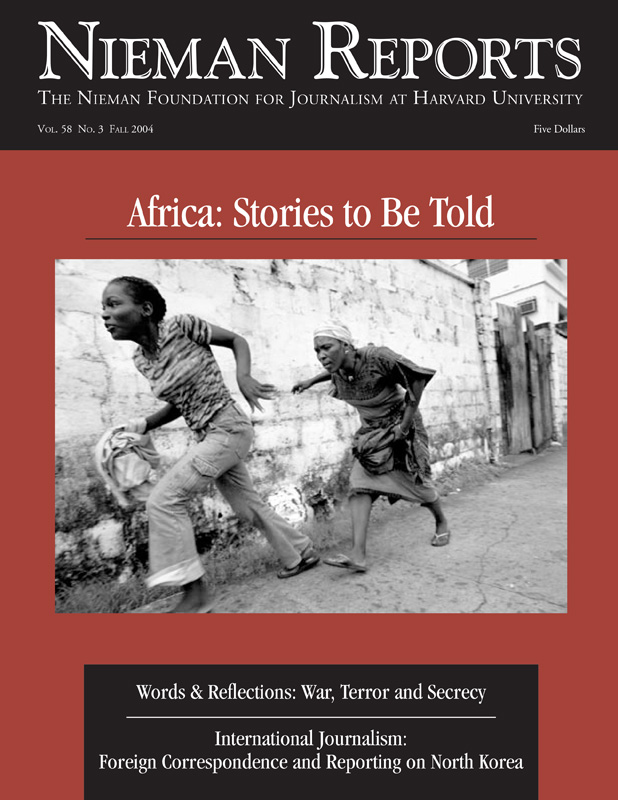In 2003, Los Angeles Times photographer Carolyn Cole went to Liberia to document its ongoing civil war. Her photographs appeared in a series, “Monrovia Under Siege,” which offered readers an intimate look at what this war had done to the people who live there. In her photographs, Cole paid particular attention to the innocent victims who had been pulled into the conflict. With many of her images, readers were able to come away with a sense of what the street fighting in the nation’s capital felt like. For this work she was awarded the 2004 Pulitzer Prize for feature photography.Cole describes below what Liberians were experiencing at the time of her arrival.
“Liberians had long been forgotten by the outside world as a bloody civil war terrorized the civilian population for much of the past decade. For a brief moment in 2003, the world’s attention took note as government and rebel militias fought for control and a guarantee of profits from the country’s rich resources. The rebels demanded an end to the reign of former President Charles Taylor, while Taylor insisted on staying until peacekeepers arrived. Men, women and children fled the countryside as rebel fighters advanced on the capital, often looting and burning homes in their path. Those displaced by the fighting took refuge in schools, churches and camps, which also came under attack from mortar fire. The final battle was waged in the city center. A forced change of leadership was finally arranged, but not before hundreds had been killed and wounded, leaving a lasting scar on the already tragic history of Liberia.”
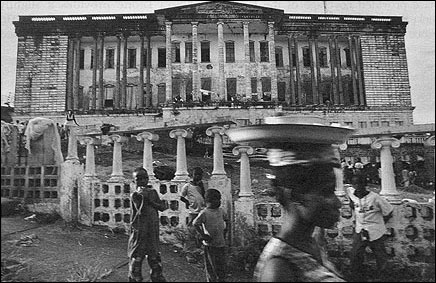
More than 9,000 people crowded into what was once the Masonic Temple of Monrovia, Liberia. The majority arrived there after fleeing fighting on the outskirts of the capital.
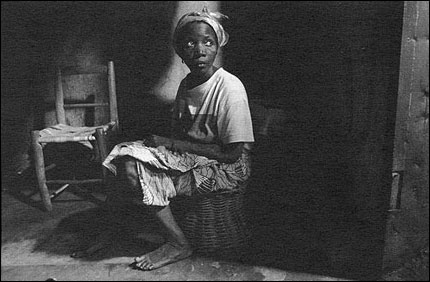
Tehneh Johnson, one of thousands of displaced Liberians, had been living at a former U.S. radio station when she was told to leave as the fighting drew near.
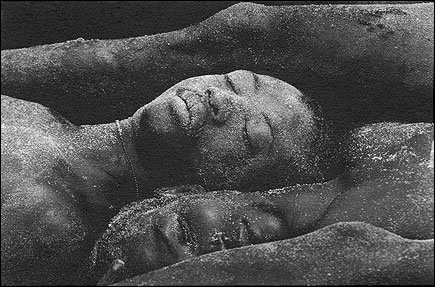
Thousands of Liberians died during a decade of civil conflict, including these men buried in a sandy mass grave along with 64 others on the day international peacekeepers finally arrived in the summer of 2003.
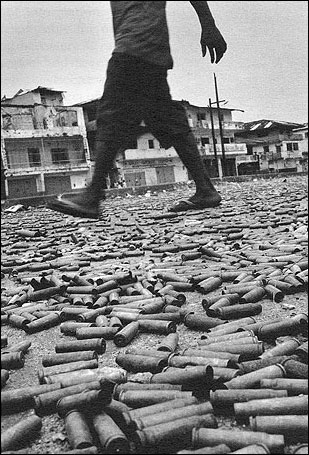
Bullet casing carpet a street in Monrovia where fighting was heaviest between government and rebel soldiers.
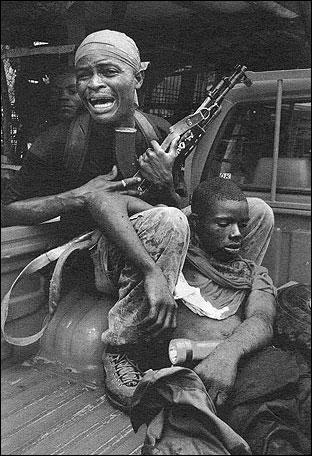
A soldier cries for his comrade who died in his arms after a frontline offensive, as government soldiers fought to take back territory lost to rebels.
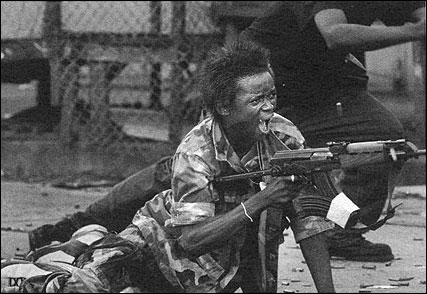
A young Liberian fighter defends Monrovia, when a standoff between rebel and government militias holds the city under siege.
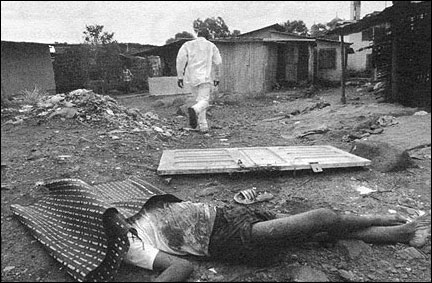
A man killed in overnight fighting is left by residents of the area, as they run to avoid being hit by gunfire or shelling.
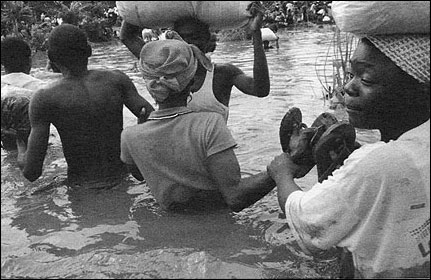
Unable to find food in government-held areas, thousands of Liberians took back routes through swampland to look for food in rebel-controlled territory. Photos by Carolyn Cole/Los Angeles Times.


